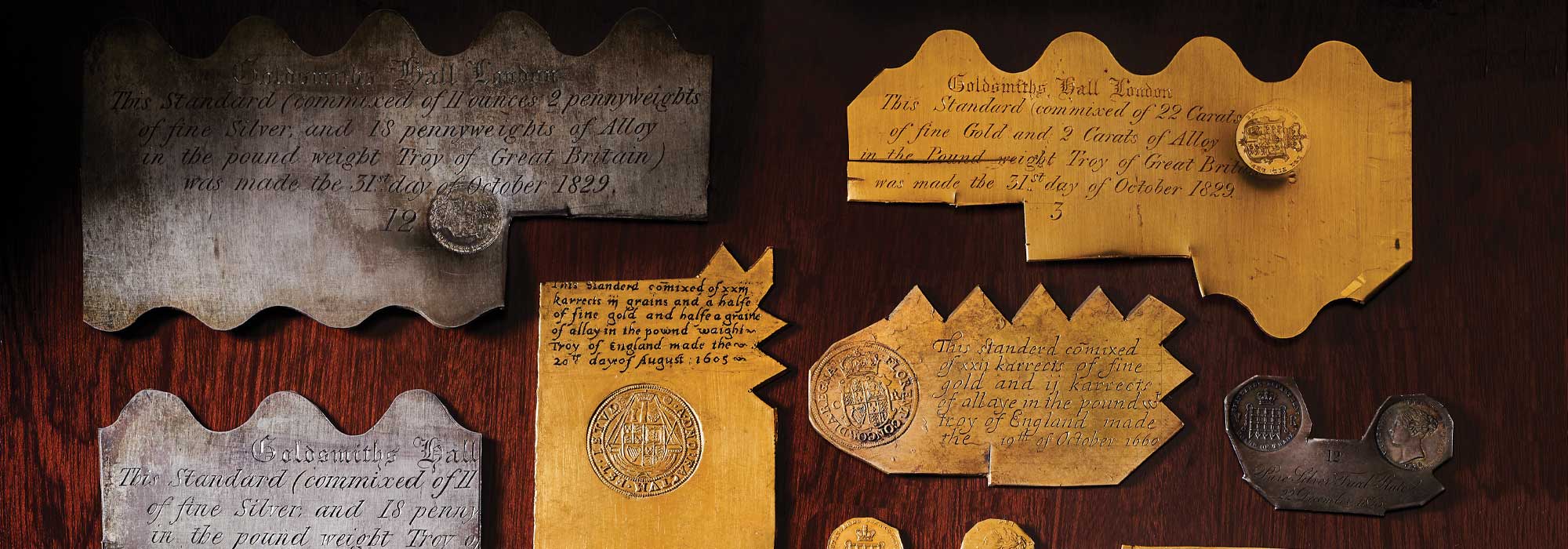
The Trial of the Pyx affects everything we do at The Royal Mint. For more than 700 years, every coin we've produced has been subjected to a rigorous trial steeped in tradition and ceremony. However, the Trial is more than just show. Overseen by the Queen's Remembrancer of the Royal Courts of Justice, it is one of the longest established judicial practices in the country.
The Trial gets its name from the Pyx boxes in which the coins are transported. The boxes, in turn, get their name from the Pyx Chamber in Westminster Abbey. For a number of centuries, boxes of coins set aside to be tested were stored here. There is also evidence that at least some of the testing itself took place in the chamber. A stone table in the room is now often confused for an altar but was actually used for testing silver.
These days, Pyx boxes are stored at The Royal Mint, which prides itself on being one of the most secure sites in the United Kingdom. Just like the boxes of centuries past, modern Pyx boxes are made of wood.
"We have a stock of wooden boxes to ensure we have enough capacity to cover all required samples," explains Gwyn Roberts, Quality Systems Manager at The Royal Mint. "Each box has its own lock, with only the Quality department having access to the keys."
The keys themselves are kept in a secure and alarmed room to which only a handful of individuals have access.
Members of the Quality department ensure that random samples are pulled from each batch of coins produced, be they commemorative, circulating or precious metal bullion coins. Exactly how many samples are pulled depends somewhat on the coin in question and the metal being used. For bimetallic coins made of cupro-nickel and nickel-brass, one sample coin is pulled for every 10,000 pieces that are manufactured. For cupro-nickel pieces, one sample is pulled for every 20,000 coins produced. For gold coins, it's one sample for every 10,000 pieces; for silver coins, we take one sample for every 15,000 pieces manufactured.
Of course, The Royal Mint produces a lot of coins – more than 3.3 billion coins and blanks for distribution around the world – so those single samples add up quickly. This year, for example, The Royal Mint will be transporting more than 16,000 coins to the Trial. Demand for the striking of coins – circulating coins in particular – can vary considerably from year to year. It's not unheard of for The Royal Mint to find itself hauling as many as 50,000 coins to Goldsmiths’ Hall, where the Trial has been held since 1871.
A certain number of those coins will be assayed to confirm that their metal content meets each specification. Some of those coins subjected to so-called ‘destructive testing’ will be melted down and their metals re-used in future coins. The bulk of the coins, those that have been handled by jurors, will return to The Royal Mint's vaults and be catalogued. It is from this group of coins that The Royal Mint offers collectors and enthusiasts the chance to own a piece of history.
The various coins that have been subjected to the rigorous standards of the Trial of the Pyx are unique in that each will have been handled differently. Some may have smudges from jurors' fingers, some may have minor scratches – each little imperfection, however, helps write the coin's place in history. It is a coin that has played a role in the centuries-old tradition of quality that serves as the bedrock of The Royal Mint's mission.
You can connect with that history by browsing the Trial of the Pyx range. Keep in mind that many of the coins are offered in relatively low numbers. In some cases, only one example may be available. As such, the coins tend to sell out very quickly.
Discover great stories from history and how we're celebrating these moments within The Royal Mint
Read more
